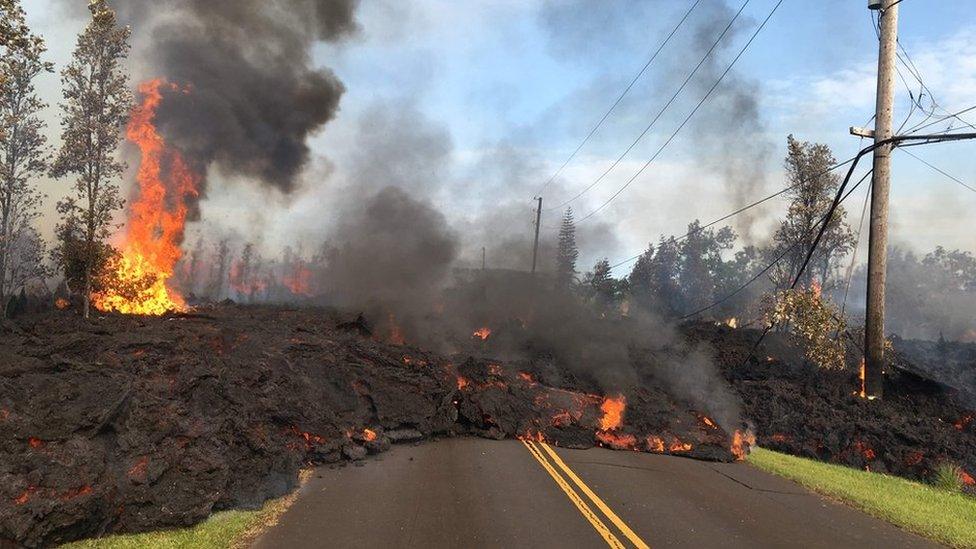Hawaii's Kilauea: Explosive eruption at volcano
- Published
Hawaii volcano sends 30,000ft plume into the air
An explosive eruption at Hawaii’s Kilauea volcano has sent ash 30,000ft (9,100m) into the sky.
The eruption took place at 04:15 local time (14:15 GMT) on Thursday, and scientists say further activity is likely in the near future.
Staff at the volcano observatory and the national park had been evacuated.
Since a new zone of Kilauea began erupting almost two weeks ago, lava has wrecked dozens of homes and forced hundreds of people to be evacuated.
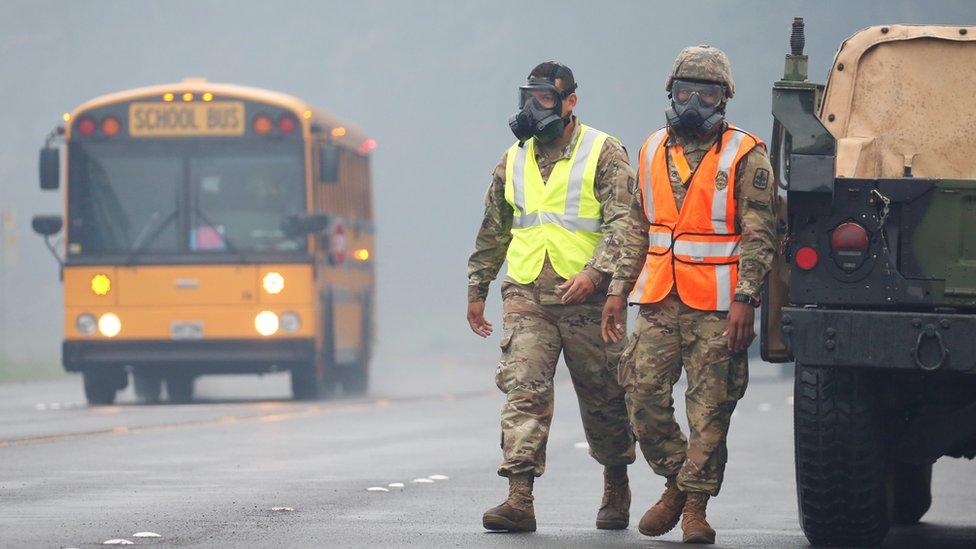
National Guard soldiers in Hawaii sought protection from ash and volcanic gases
A red aviation code had already been issued, warning pilots to avoid the potentially damaging ash cloud.
The US Geological Survey had warned that an explosive eruption at Kilauea was becoming more likely as the volcano's lava lake was lowering.
This increases the risk of steam-powered explosions as the magma meets underground water.
"We may have additional larger, powerful events," USGS geologist Michelle Coombs told reporters after Thursday's eruption.
Hawaii's emergency management agency advised people in the area affected by ash to stay in their homes if possible.
Allow X content?
This article contains content provided by X. We ask for your permission before anything is loaded, as they may be using cookies and other technologies. You may want to read X’s cookie policy, external and privacy policy, external before accepting. To view this content choose ‘accept and continue’.
Kilauea is one of five volcanoes on the island of Hawaii - three of them active.
It is one of the most active in the world and has been erupting continuously, though not explosively, for more than 30 years.
Its last explosive eruption took place in 1924.
Even before Thursday morning's explosive eruption, the ash plume from the volcano could be seen from the International Space Station.
Allow X content?
This article contains content provided by X. We ask for your permission before anything is loaded, as they may be using cookies and other technologies. You may want to read X’s cookie policy, external and privacy policy, external before accepting. To view this content choose ‘accept and continue’.
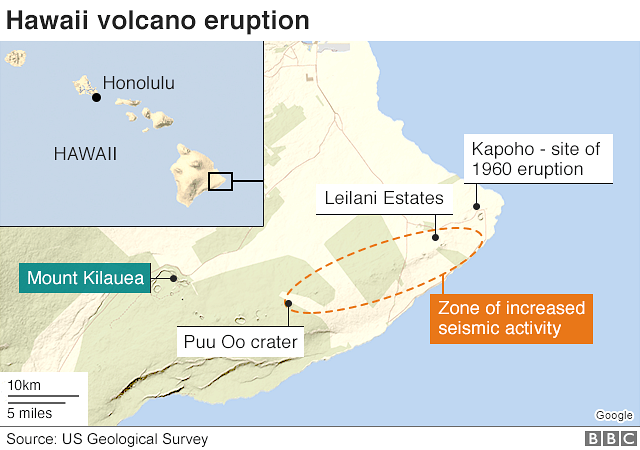
- Published14 May 2018
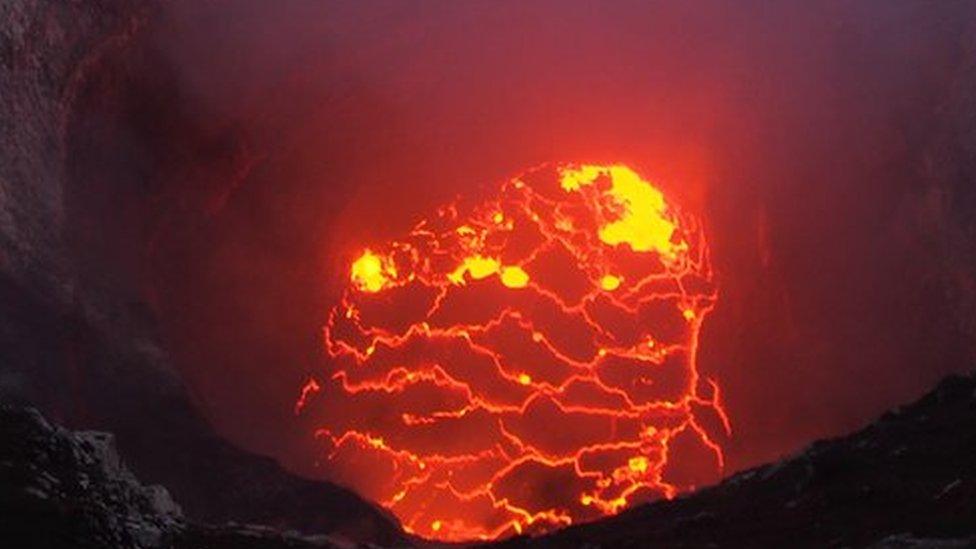
- Published10 May 2018
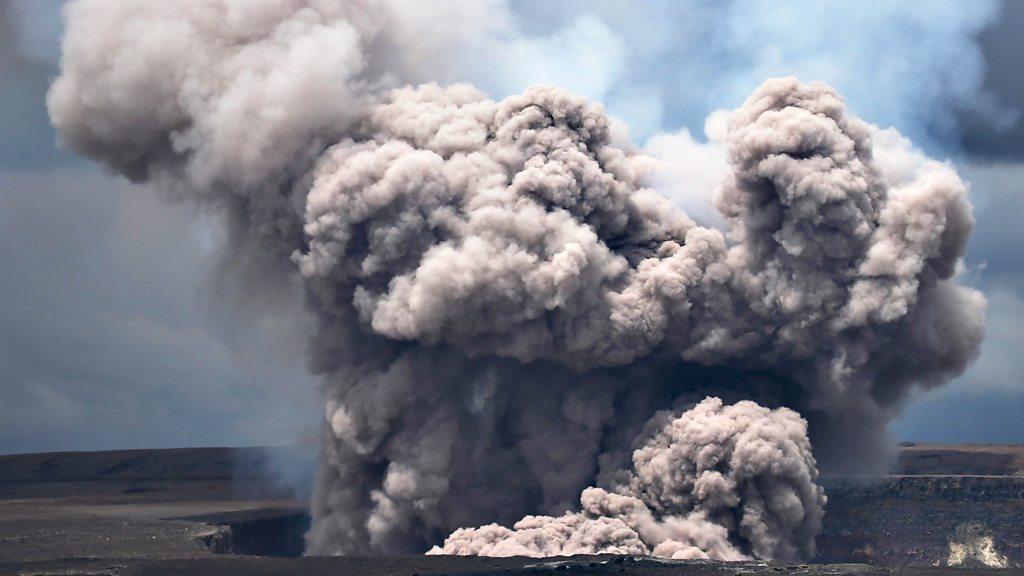
- Published4 May 2018
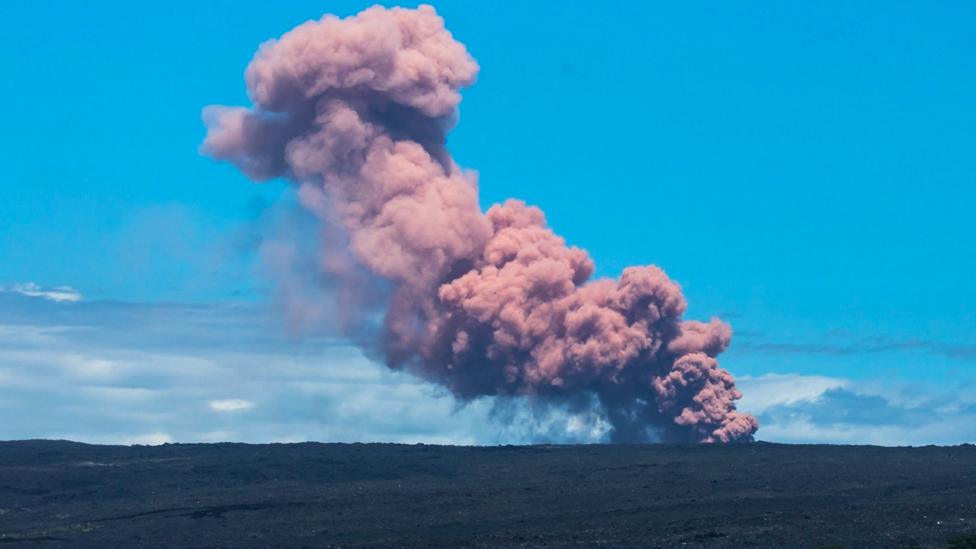
- Published7 May 2018
